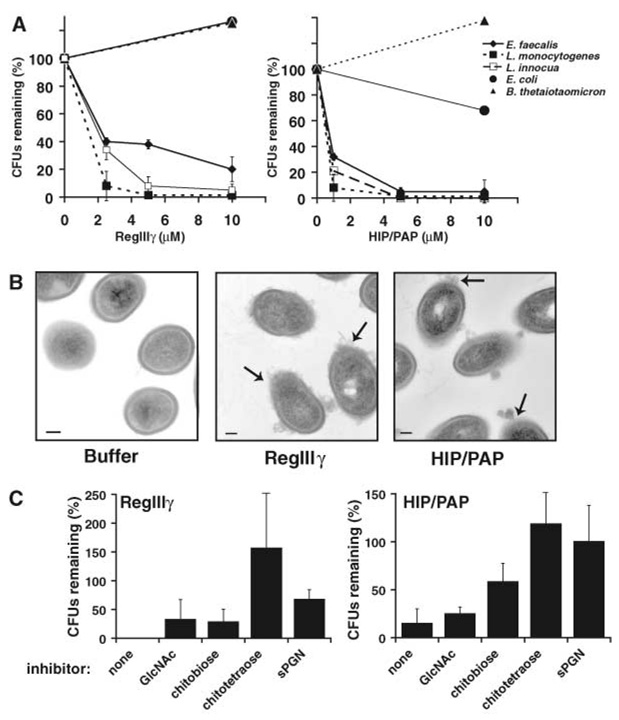Fig. 3.
Mouse RegIIIγ and human HIP/PAP have antibacterial activity against Gram-positive bacteria. (A) Percentage of CFUs remaining after exposure to purified RegIIIγ and HIP/PAP. L innocua, L monocytogenes, E. faecalis, Escherichia coli K12, and B. thetaiotaomicron were grown to mid–log phase and incubated with purified lectins. Initial bacterial concentrations ranged from 105 to 106 CFU/ml. After incubation for 2 hours at 37°C, viable bacteria were quantified by dilution plating. Assays were done in triplicate. Mean ± SD is plotted. (B) Transmission electron microscopy of L. monocytogenes following a 2-hour exposure to 10 µM purified recombinant RegIIIγ and HIP/PAP. Arrows indicate examples of damaged cell surfaces and cytoplasmic leakage. Scale bar, 100 nm. (C) Lectin bactericidal activity is inhibited by chitooligosaccharides and sPGN. GlcNAc, chitobiose (GlcNAc2), or chitotetraose (GlcNAc4) at 10 mM or 35 µM sPGN was added to antibacterial assays performed on L. innocua as in (A). Each percentage CFU was calculated relative to a no-lectin control assay containing an identical amount of chitooligosaccharide or sPGN.

